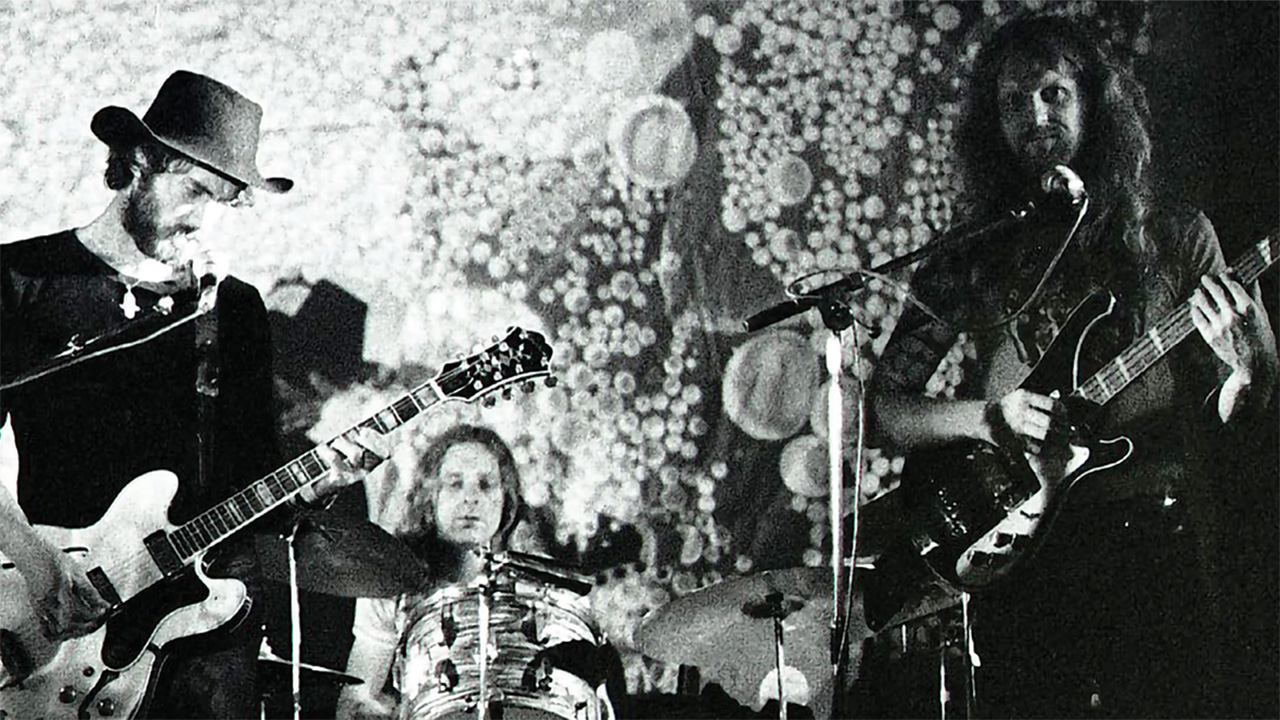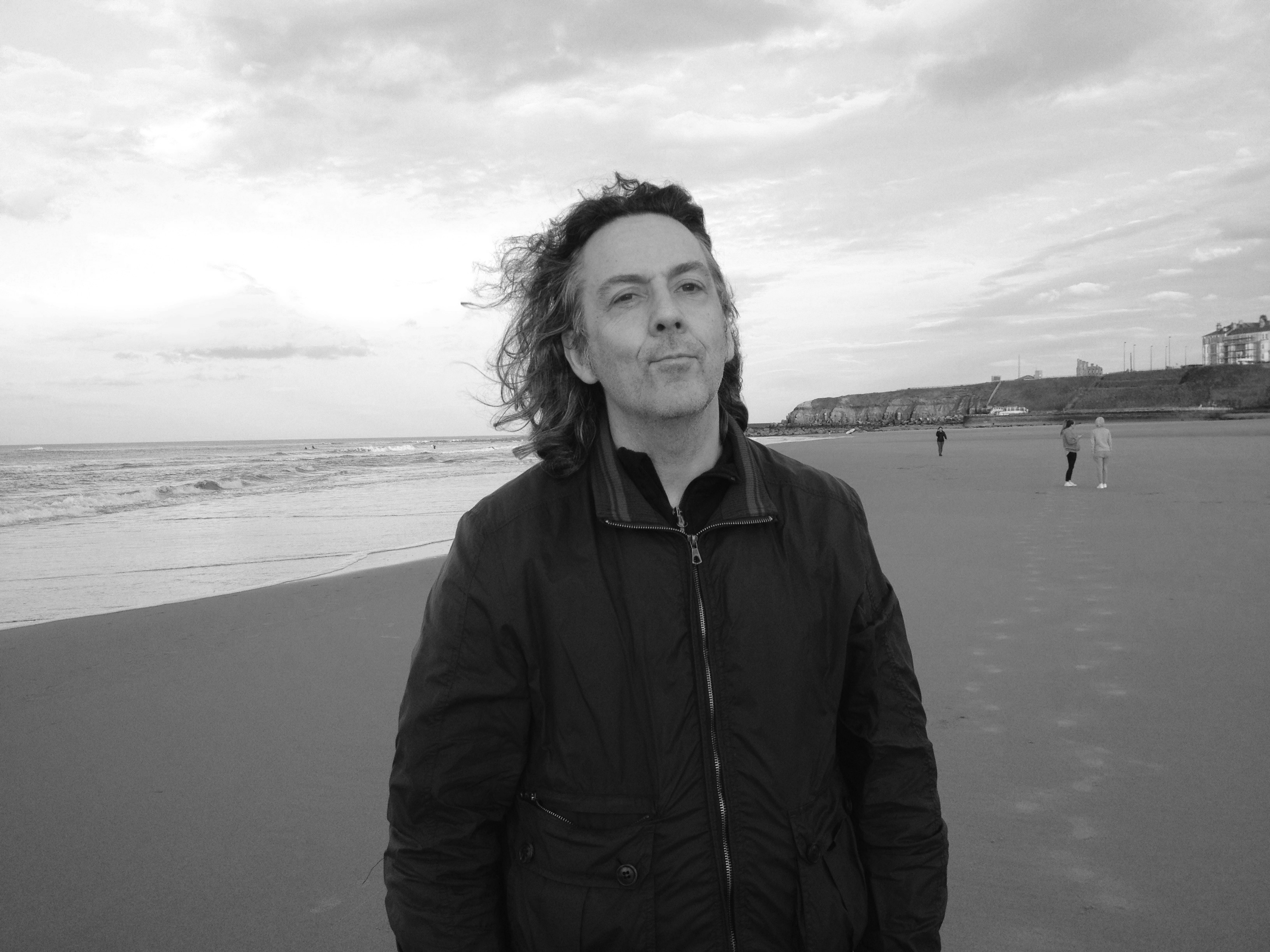Fifty-one years ago, Germany-based Nektar finally made headway in their native UK with fourth album Remember The Future. The conceptual piece explored prescient themes of the environment and looking after the planet against a sci-fi-inspired backdrop. Long-serving bassist Derek ‘Mo’ Moore tells Prog the story of the recently-reissued record that was way ahead of its time.
By 1973, the year in which Nektar made their most celebrated album, Remember The Future, the four virtuoso Brits who comprised the group were honorary Germans. They lived in Germany, they’d recorded three LPs for the German label Bellaphon/Bacillus, they had German girlfriends or wives, and German artist Helmut Wenske painted their album sleeves.
Thanks to their mind-expanding live shows and LPs, such as their 1971 debut Journey To The Centre Of The Eye, Nektar sat at the epicentre of a vibrant, bohemian scene that drew hip young German devotees.
“The UK scene at that time was mainly based on pop music,” says Nektar’s bassist Derek ‘Mo’ Moore today. “That was all you heard on the radio. But in Germany people weren’t very interested in pop music – they wanted to listen to something new, something fresh. We loved people like Vanilla Fudge and The Moody Blues, but we tried not to listen to too much of other people’s stuff so that we wouldn’t be influenced by it.”
Together with frontman/guitarist Roye Albrighton, keyboardist Allan ‘Taff’ Freeman and drummer Ron Howden, Moore had formed Nektar in Hamburg four years earlier. Quickly scoring a month-long residency at the city’s famed Star Club in 1969, they trod boards previously played by The Beatles and countless other luminaries, playing from 6pm till 2am every night, one hour on, one hour off.
This punishing schedule lent itself to improvisation, something at which Nektar soon came to excel. They performed to packed, relatively small-capacity crowds, writing fabulous new music on the hoof, and later adapting it for their recording sessions. “It was an incredible time and Black Sabbath, Spooky Tooth and Ace Kefford from The Move were passing through, too,” says Moore, recalling the band’s early club dates in Germany.
“We’d take a kind of speed called Captagon to keep going, and we played so much that we didn’t have to think about it. Cozy Powell was the drummer in Ace’s band [The Ace Kefford Stand], and we had a lot of fun with Cozy! If we weren’t sleeping we were partying – and there wasn’t much sleeping...”
Nektar had a secret weapon, too: lighting tech and honorary fifth member Mick Brockett. Previously employed by Pink Floyd, Brockett was a maestro of the liquid light show, manipulating colour wheel slides with an oil or liquid dye solution trapped inside to create trippy, outlandish backdrops that chimed with Nektar’s deliciously far-out music.
“I’d tell club owners that it would be another 300 Deutsch Marks if they wanted our light show,” says Moore. “They’d say, ‘We’ve got one.’ I’d say, ‘Not like this one, you haven’t!’ They always paid up once they’d seen it.”
Chatting to Prog from his Lexington, North Carolina home, Moore is now the only surviving member of the original Nektar line-up. Roye Albrighton died in 2016 and Alan ‘Taff’ Freeman passed away in 2021. Prog had been due to interview Nektar’s drummer Ron Howden too, but sadly he died just days before we were due to speak.
We’d play about 12 hours a day, record everything roughly, then listen back… There was a little Gasthaus next door, and we’d have a bratwurst there and discuss concepts
“It was awful, because me and Ron had been out playing dates together with the current line-up of Nektar here in the US,” says Moore. “And just a week before Ron passed, we’d been jamming on new stuff and it sounded great. On the Sunday he said, ‘Let me take a thumb drive of the new music and I’ll get on it.’ Then on the Tuesday his wife Anne called me to say he’d been rushed into hospital, where he’d suffered a brain aneurysm.”
Though Moore is obviously shaken by Howden’s passing – “You have to remember we played together for 60 years,” he notes – he seems admirably stoical about being the last man standing. Now 77, and originally from South Yorkshire, he tells of how he and his wife Nicky are still close to Roye Albrighton’s German-born widow, Catrin, one of many in Nektar’s inner circle who attended Ron Howden’s Celebration Of Life ceremony in the US.
Moore also mentions the new Nektar live DVD, due out later in 2024, which documents some of Howden’s final shows. Nektar will continue, it seems, but we’re here to talk about Remember The Future: its trippy, part-environmental concept, its intricate lattices of taut, hooky prog, and the recently released four-CD box set that celebrates this wonderful record’s 50th anniversary. As Prog and Moore strap in for a journey back to 1970s Germany, his eyes light up. “I can talk as long as you want,” he says.
Nektar knew from the outset that they were onto something special with Remember The Future. But with loads of other new music already written and not yet committed to tape, a palate-cleansing exercise was required. “Our third album, ...Sounds Like This, was decent stuff we had to get out of our system,” says Moore. “We needed to clear our heads for the main project.”
Mick Brockett’s brain would come up with this brilliant back-to-front stuff… a bit like Ringo Starr coming up with the title of A Hard Day’s Night
The band’s confidence was such that they decided to record ...Sounds Like This live in the village of Stommeln, near Cologne, at the studios of famed Tangerine Dream and Scorpions producer, Dieter Dierks. Dierks’ first taste of recording a British rock band had been Nektar’s debut, Journey To The Centre Of The Eye, then its similarly lysergic 1972 follow-up, A Tab In The Ocean.
Now, with Nektar and Bellaphon Records head Peter Hauke producing and Dierks engineering, Dierks Studios opened its doors to the 40-odd competition winners Nektar had selected to witness proceedings, Mick Brockett light show and all.
Job done, Nektar then relocated to the tiny Black Forest village of Wembach, where work on Remember The Future began in earnest. Another graphic artist friend, Klaus Holitzka (who designed science-fiction book covers and sold artworks at Nektar’s gigs), had alerted them to a village hall rehearsal space directly opposite his home, which was available rent-free.
“Holly, as we called him, was a great guy and we’d play there about 12 hours a day, record everything roughly, then listen back and piece together the bits we liked,” says Moore. “There was a little Gasthaus/restaurant next door, and we’d have a bratwurst there and discuss concepts.”
Even at this relatively early stage, Helmut Wenske – very much Nektar’s Roger Dean figure – had already been instructed to crack on with Remember The Future’s artwork. All he had to go on, though, was its title, something that Nektar’s lighting engineer (and co-lyricist with Moore) Mick Brockett had conceived. “Mick’s brain would come up with this brilliant back-to-front stuff,” says Moore. “You know, a bit like Ringo Starr coming up with the title of A Hard Day’s Night...”
When Nektar saw the stunning surrealist sci-fi artwork Wenske had painted, they were delighted. But it was a small detail from the back cover – a winged blue man – that proved most significant and inspirational. “Independently of that, we’d already come up with a character called Bluebird,” says Moore. “And there he was.”
Bluebird projects his thoughts into the little boy’s brain. He’s saying, ‘Remember the future is always going to be there, so you better look after it’
Remember The Future’s concept can seem woolly – and not just because it has several threads. Some say the LP concerns an extra-terrestrial who enlightens humankind about impending environmental catastrophe, but is that true? “Somewhat, yes,” says Moore.
“We were obviously in that universe. Everything is in there: recycling is in there... we were ahead of our time. Basically, Remember The Future is the story of a little blind boy. We don’t know his name, but he meets Bluebird, who’s trying to direct him, and to direct the whole human race, in fact. Bluebird projects his thoughts and his own image into the little boy’s brain. He’s saying, ‘Remember the future is always going to be there, so you better look after it.’”
Sounds like some pretty strong weed was smoked! “Very likely,” laughs Moore. “We used to tour with the Welsh band Man a lot. We did a tour through Germany called The Manektar Tour, took a whole kilo of hash with us and there wasn’t the tiniest blim left. If we had no filters for our joints, one of the Man guys would just rip a page out of his passport.”
Breaking with tradition, Nektar recorded Remember The Future outside Germany. It was nailed in just five days, August 12-16, 1973 at Chipping Norton residential studios in Oxfordshire. Images Of The Past, the opening section of Remember The Future, Pt. 1, immediately presented Nektar as a prog act with a distinctly funky side, while Wheel Of Time showcased their magnificent vocal harmonies.
Frank Zappa was like, ‘You guys look beat, man – I know what you’ve been smoking.’ He loved our music, though
“It was the height of summer, but we never saw the sun,” recalls Moore. “There was an amazing synergy between us. I think the longest single session was 72 hours straight, so we were feeding the engineer Barry Hammond AN1 speed pills. Me and Mick had to scramble to write lyrics for the vocal melodies Roye was scatting, then we’d pluck vocal harmonies out of the air, the four of us singing them around one mic.”
Nektar barely paused for breath, far less sleep. Two days after the album sessions wrapped, they were in Copenhagen to support Frank Zappa & The Mothers on their Over-Nite Sensation tour. Although Zappa’s tours were drug-free zones, he knew where to find his bandmates after watching Nektar from the side of the stage.
“They’d all pile into our dressing room for obvious reasons,” says Moore with a laugh. “Frank was like, ‘You guys look beat, man – I know what you’ve been smoking.’ He loved our music, though, and he actually wanted to sign us to his label.”
Back at CBS Studios in London, meanwhile, the newfangled quadrophonic mix session for Remember The Future had gone awry, parts of Roye Albrighton’s brilliant wah-wah and Leslie cabinet guitar work all but disappearing due to phase cancellation issues. The stunning version of the album we know today was down to an 11th-hour remix/restoration at Dieter Dierks’ studios in Stommeln, where all problems were resolved. Once again, Germany had come up trumps for Nektar.
We thought we could make a difference to the way humans treated our planet. In 1973 we still had the chance to act, but didn’t
It was internationally, though, that they now triumphed. Remember The Future reached No.19 in the US charts in 1974, changing the band’s fortunes forever, and in time winning them such disparate fans as Pink Floyd’s Nick Mason, Iron Maiden’s Steve Harris and Joy Division’s Ian Curtis. Even now, Mo Moore finds it hard to pinpoint exactly why the LP has charmed so many. “All I can tell you is that it was a magical moment in time,” he says. “The flow of it was very special.”
More pertinent and timely – in this grave era of global warming – is Moore’s sign-off in his sleeve notes for the 50th anniversary edition. “When we wrote and recorded [it] we thought we could make a difference to the way humans treated our planet,” he writes. “In 1973 we still had the chance to act, but didn’t... Remember The Future.”

